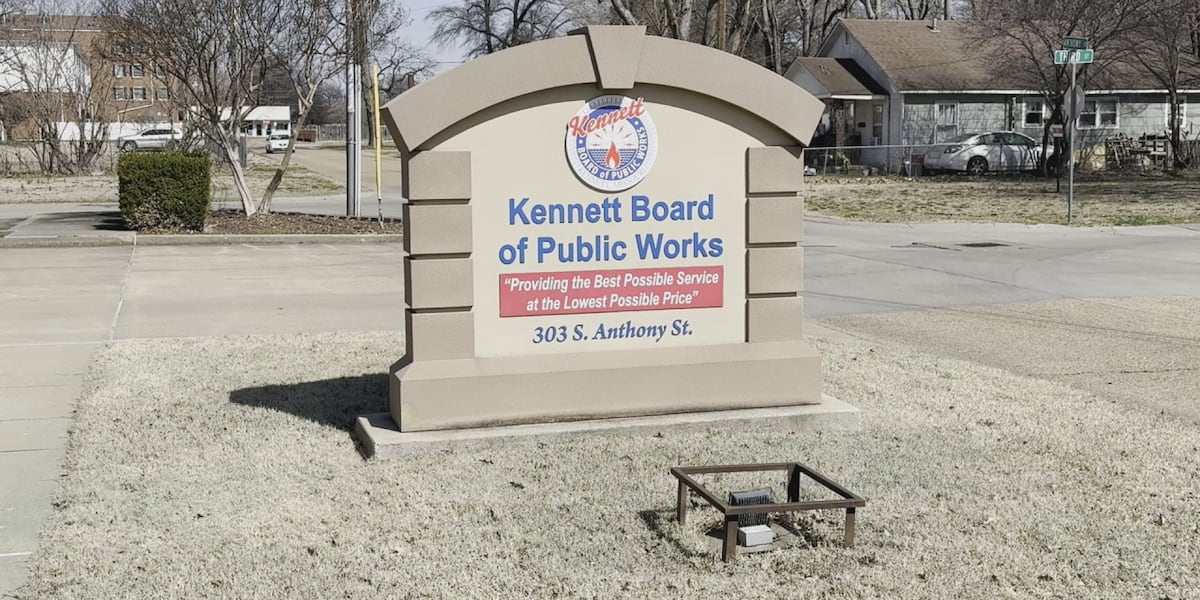Report on Kennett’s New Residential Sanitation Initiative and Alignment with Sustainable Development Goals
Executive Summary
The Kennett Board of Public Works is implementing a new residential sanitation service, commencing November 3rd. This initiative is a significant municipal action aimed at enhancing urban sustainability and public health. The program directly supports the framework of the United Nations Sustainable Development Goals (SDGs), particularly SDG 11 (Sustainable Cities and Communities), SDG 3 (Good Health and Well-being), and SDG 12 (Responsible Consumption and Production).
Initiative Details and Implementation
The new service is designed to modernize and standardize waste collection, contributing to municipal efficiency and environmental quality.
- Commencement Date: Service begins on November 3rd.
- Equipment: Two automated side-load trucks will be deployed for collection routes.
- Resident Provisions: Each residence will be issued a 96-gallon rollout cart. These carts are assigned to the property and must remain at the initial location.
- Service Fee: A fee of $18.95 will be applied to monthly utility bills, effective December 14th.
Contribution to Sustainable Development Goals (SDGs)
This program serves as a key local action supporting global sustainability targets through improved waste management infrastructure.
- SDG 11: Sustainable Cities and Communities: By establishing a systematic and automated waste collection service, Kennett directly addresses Target 11.6, which aims to reduce the adverse per capita environmental impact of cities through improved municipal waste management. This fosters a cleaner, safer, and more resilient urban environment.
- SDG 3: Good Health and Well-being: Proper and contained waste disposal is fundamental to public health. This initiative helps mitigate health risks associated with unmanaged waste, such as pest infestation and pollution, thereby contributing to Target 3.9, which focuses on reducing illnesses from environmental contamination.
- SDG 12: Responsible Consumption and Production: The standardized collection system provides a foundational infrastructure for future waste management strategies, including potential recycling and waste reduction programs. This aligns with the principles of Target 12.5, which encourages the substantial reduction of waste generation.
Operational Procedures for Residents
To ensure the efficiency and safety of the automated collection system, residents are required to adhere to the following procedures for cart placement:
- Carts must be placed at the curb before 6 a.m. on the designated pickup day.
- The wheels of the cart must face the residence.
- The cart must be positioned within three feet of the curb.
- A minimum clearance of three feet must be maintained around the cart, clear of all obstructions.
- All trash must be secured in bags before being placed inside the cart.
- No trash or other items should be placed on top of the closed cart lid.
Future Planning and Development
The Board of Public Works has indicated future plans to acquire a grapple truck. This will enhance the city’s capacity to manage large and bulky items, further advancing its commitment to comprehensive and sustainable waste management in line with the objectives of SDG 11.
Analysis of Sustainable Development Goals in the Article
-
Which SDGs are addressed or connected to the issues highlighted in the article?
-
SDG 11: Sustainable Cities and Communities
This is the most directly relevant SDG. The article’s central theme is the implementation of a new “residential sanitation service” with the stated goal “to provide a cleaner Kennett.” This initiative is a direct effort to improve the quality of life, safety, and sustainability of the urban environment for its residents.
-
SDG 6: Clean Water and Sanitation
The article explicitly mentions “sanitation services.” While it focuses on solid waste, proper waste management is a critical component of overall sanitation. It prevents the pollution of water sources from uncontrolled waste dumping, thereby contributing to the broader goals of clean water and sanitation for all.
-
SDG 12: Responsible Consumption and Production
This SDG is connected through its focus on waste management. By establishing a formal, city-wide system for waste collection using “automated side-load trucks” and standardized “96-gallon rollout cart,” the city is creating a framework for more responsible management of municipal waste, which is a key aspect of sustainable consumption and production patterns.
-
SDG 11: Sustainable Cities and Communities
-
What specific targets under those SDGs can be identified based on the article’s content?
-
Target 11.6: Reduce the adverse environmental impact of cities
The article directly addresses this target, which specifies “paying special attention to… municipal and other waste management.” The entire initiative—introducing new trucks, providing carts to all residents, and setting clear procedures for trash pickup—is a concrete action to improve municipal waste management and reduce the city’s environmental footprint.
-
Target 6.3: Improve water quality by reducing pollution
A structured sanitation service, as described in the article, helps prevent illegal dumping and ensures that trash is properly contained and managed. This reduces the likelihood of waste polluting local land and water systems, thereby contributing to the goal of improving water quality.
-
Target 12.5: Substantially reduce waste generation
While the article does not mention recycling or waste reduction, the establishment of a comprehensive collection system is a foundational step. It allows for the systematic management of waste, which is a prerequisite for future initiatives aimed at reduction, recycling, and reuse. The standardized “96-gallon rollout cart” also provides a mechanism for potentially tracking and managing waste volumes in the future.
-
Target 11.6: Reduce the adverse environmental impact of cities
-
Are there any indicators mentioned or implied in the article that can be used to measure progress towards the identified targets?
-
Indicator 11.6.1: Proportion of municipal solid waste collected and managed in controlled facilities out of total municipal solid waste generated, by cities.
The article strongly implies this indicator. By stating that “all Kennett residents will receive a 96-gallon rollout cart,” it describes a system designed to collect waste from the entire residential population. The implementation of this service provides a direct measure of the proportion of residential solid waste being formally collected and managed.
-
Implied Indicator for SDG 6: Percentage of the population with access to basic sanitation services.
The article implies a quantifiable measure of progress. The rollout of a new sanitation service to “all Kennett residents” indicates an effort to achieve 100% coverage for residential solid waste collection, which is a key aspect of sanitation infrastructure.
-
Implied Indicator for SDG 12: Establishment of a standardized municipal waste collection system.
The article details the components of such a system: “two automated side-load trucks,” a “96-gallon rollout cart” for every resident, and specific procedures for collection (“Wheels must face the residence,” “Be within three feet of the curb”). The existence and operational status of this system serve as a qualitative indicator of progress towards better waste management infrastructure, which is necessary before quantitative measures like recycling rates can be tracked.
-
Indicator 11.6.1: Proportion of municipal solid waste collected and managed in controlled facilities out of total municipal solid waste generated, by cities.
-
Create a table with three columns titled ‘SDGs, Targets and Indicators” to present the findings from analyzing the article. In this table, list the Sustainable Development Goals (SDGs), their corresponding targets, and the specific indicators identified in the article.
SDGs Targets Indicators SDG 11: Sustainable Cities and Communities Target 11.6: By 2030, reduce the adverse per capita environmental impact of cities, including by paying special attention to air quality and municipal and other waste management. Indicator 11.6.1 (Implied): The proportion of municipal solid waste collected, as evidenced by the plan to provide a “96-gallon rollout cart” to “all Kennett residents.” SDG 6: Clean Water and Sanitation Target 6.3: By 2030, improve water quality by reducing pollution, eliminating dumping and minimizing release of hazardous chemicals and materials. Implied Indicator: The proportion of the population with access to a formal solid waste collection service, aiming for universal coverage for all residents. SDG 12: Responsible Consumption and Production Target 12.5: By 2030, substantially reduce waste generation through prevention, reduction, recycling and reuse. Implied Indicator: The establishment of a comprehensive and standardized municipal waste management system as a foundational step for future waste reduction and recycling efforts.
Source: kait8.com







